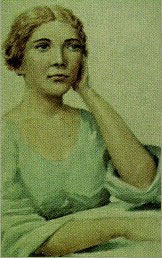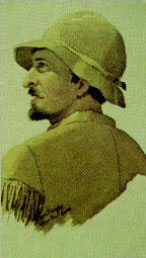The Whitmans had less success with the Cayuse Indians at Waiilatpu. Narcissa opened a school for orphans of the Oregon Trail emigrants. These children had no place to go, so were boarded at the mission. Dr. Whitman tried to teach the Indians how to raise wheat, but they weren't interested. With the wheat he did manage to raise, he made flour, which was sold to the Oregon Trail emigrants at exorbitant prices. They refused to pay his high prices, and by-passed his mission by taking a shortcut to Oregon City.
The northwest came under United States rule after a treaty was signed with England in June of 1846, designating the 49th parallel as the boundary line with Canada. Oregon Territory was formed in 1848 and included Washington, Oregon, Idaho, parts of Montana and Wyoming. Washington was separated from Oregon in 1851; Idaho, by Act of Congress in March 1863; Montana in 1864 and Wyoming followed in 1868. Congressional candidates visited the northwest Territory of Washington in 1861, discussing how to divide it. Natural phenomenon was considered in establishing the boundaries, with the Columbia River on the south and the mountains in the east. The House of Representatives designated the new territory as Montana, but Senator Wilson of Massachusetts proposed an amendment changing it to Idaho. Perhaps the name came from Idaho Springs, Colorado. Or some congressman noticed a steamer on the Columbia River named "Idaho." No one knows how the western boundary of Idaho got 40 miles west of the mountains. At that time it was decided that Lewiston would be the capitol of Idaho.
|  Is This Narcissa Whitman?
Is This Narcissa Whitman? |

